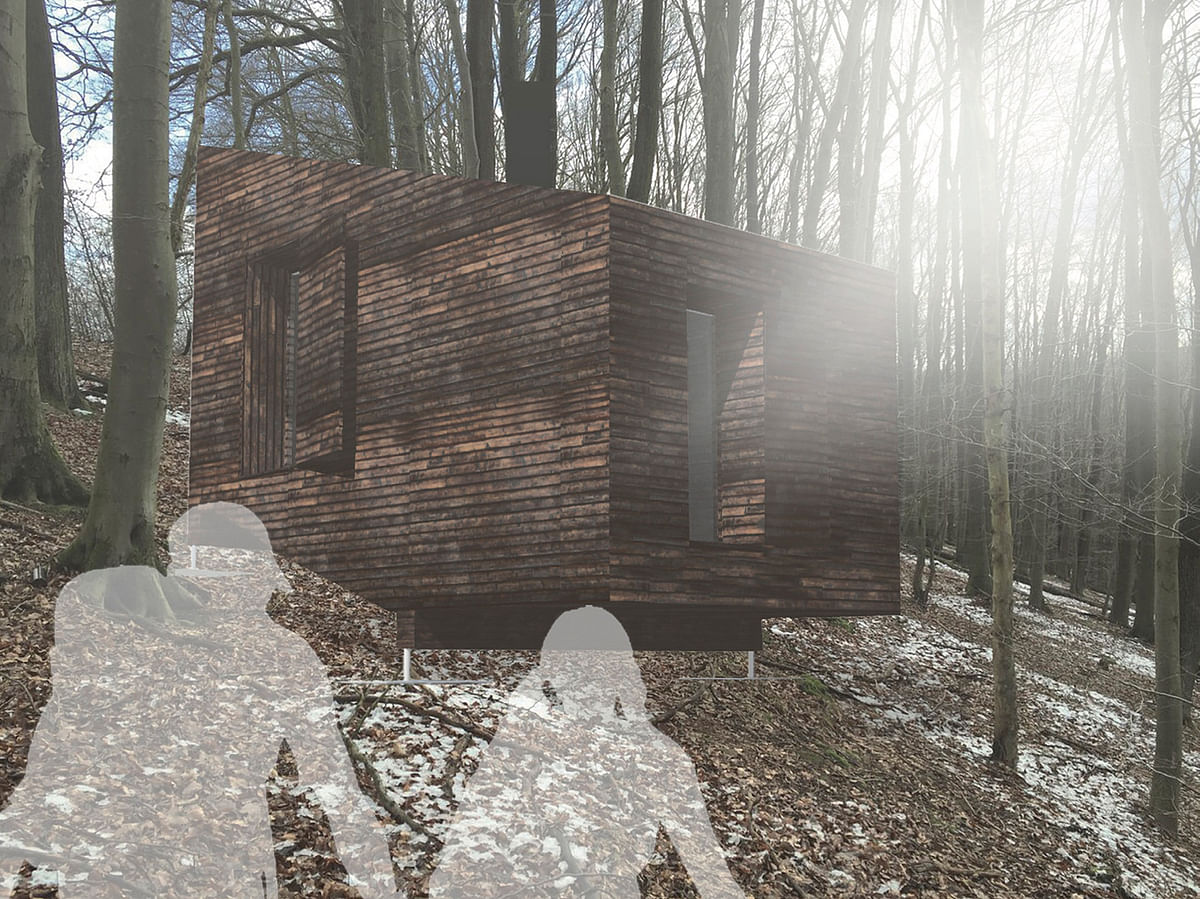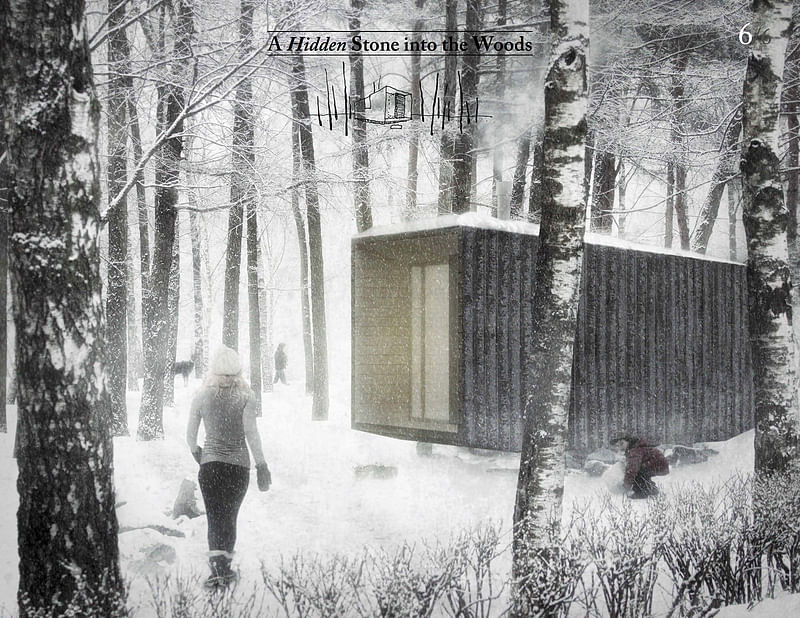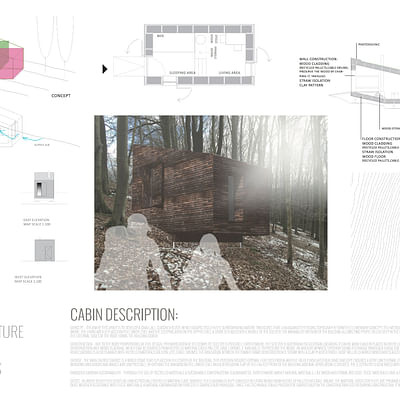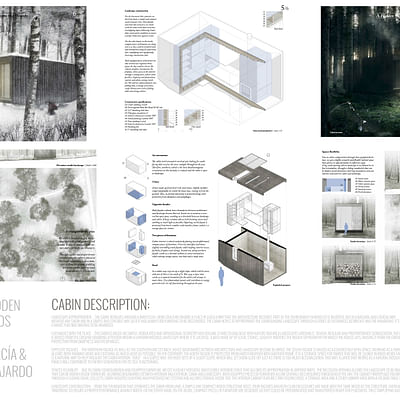Winners of CFI's 2016 design competition envision the Backwoods Cabin of the Future
By Justine Testado|
Wednesday, Apr 20, 2016

Related
It only makes sense that a forest cabin ought to be designed as sustainably as possible. Participants in Community Forest International's second annual cabin design competition took on the challenge of rethinking the traditional backwoods cabin typology, while pushing the boundaries of creative sustainable design. CFI established the competition as a reminder of the impact that architecture has on the natural environment, and to encourage architects to think of new methods of eco-friendly design — considering that the building industry has huge potential to reduce greenhouse gas emissions at little or no cost.
Participants had to ensure their cabin's overall carbon footprint are as low as possible, for the winning design would be constructed as the CFI's Rural Innovation Campus in New Brunswick, Canada. The cabin will accommodate students, apprentices, and ”innovators-in-residence”.
Starting out with a competition pool of 62 entries that was then shortlisted to 10, “Be a part of nature” by German architecture firm AW+ won the grand prize, while Max Rymsha of Lviv, Ukraine won as First Runner-Up with “Sun Catcher”. Last but not least, “A Hidden Stone in the Woods” by Isabel Gómez García & Javier Serrano Fajardo from Seville, Spain received the Jury Award for Architectural Poetry.
Keep reading for more about the top winning proposals.
(cover image) First place: “Be a part of nature” by AW+ | Germany
Project excerpt: “Concept: The aim of this draft is to develop a small-all-season shelter wich adapts itself to the surrounding nature. Two cubes which are leaning upon the rising topography form the elementary concept. The interior includes an area to sleep and an area to live, rest, eat and work. The living area is placed on the lower and the sleeping area on the upper level. A stove is placed in the middle of the shelter. The minimalist interior of the building allows two persons to live deep in the woods and become a part of the nature. The building cover is formed by both cubes or a direct connection of the external edges (roof).”
First Runner-Up/Second Place: “Sun Catcher” by Max Rymsha | Lviv, Ukraine
RELATED COMPETITION Can a building clear the air?

Project excerpt: “Concept It is a synthesis of the natural materials and efficient architectural form. In the forest, where the sun is an occasional occurrence, this house is efficient in its use of the sunlight, thus saving the costs for heating. In the surrounding of the interior a person is united with nature, as an extraordinary panorama of the Canadian forests is right in front of his eyes, not to mention, that due to the natural materials the house can “breathe”, producing a unique microclimate simultaneously. Only the simplest and the purest materials are used in the construction of this building, thus reducing the CO2 concentration and the costs for its building, as wood, straw and thatch are considered to be not only pure products, but also extremely cheap ones.”
Jury Award for Architectural Poetry: “A Hidden Stone in the Woods” by Isabel Gómez García & Javier Serrano Fajardo | Seville, Spain

Project excerpt: “LANDSCAPE APPROPRIATION: The cabin revolves around a main issue: how could we inhabit a place in such a way that the architecture becomes part of the environment in which it is inserted, but in a natural and logical way. Without any show and in a simple and sensible way, as if it had always been waiting to be discovered, the cabin hopes to appropriate the surrounding landscape through a series of exchanges between it and the inhabitant. It’s just as a hidden stone in the woods found almost by chance that was waiting to be inhabited.”
Check out each entry's project board in the image gallery right below.





Share
0 Comments
Comment as :